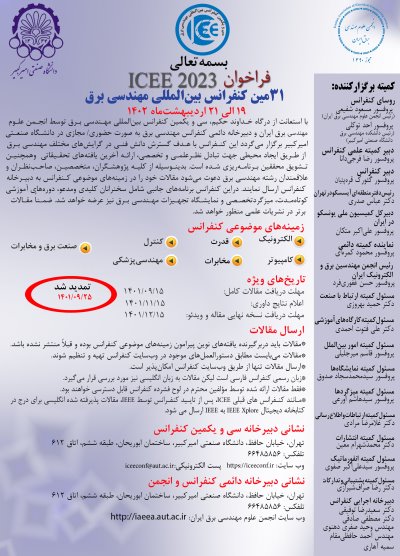0% Complete

نویسندگان :
کلمات کلیدی :
چکیده :
لیست مقالات بایگانی شده
Nooshin Farhangian - Mansour Nejati Jahromi - Mahdi Nouri
Hamid Taleb-Alhagh-Nia - Reza Rezaei Siahrood - Hamed Sajadinia
Seyed Rohollah Hosseyni - Sanaz Seyedin - Hassan Taheri
Raha Rahimi - Farzaneh Shayegh - Marzieh Kamali
Samandokht Rashidi - Amin Abdipourasl - Fatemeh Jamaloo - Reza Rostami
Meysam Hooshmand - Mahtab Sharifian - Hamid Sharifian - Javad Mahmoudi
Morteza Sharifi - Mahmood Mohassel Feghhi
Mohsen Farbood - Mokhtar Shasadeghi - Taher Niknam - Behrouz Safarinejadian
Nazanin Parhizgar - Ali Jamshidi - Peyman Setoodeh




